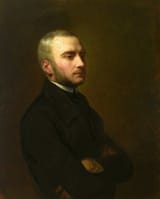Search Results
7/19/2025, 5:53:01 PM
>>24563170
The Un-divine Comedy by Zygmunt Krasiński
>The plot of the drama takes place in the near future, where Krasiński used recent contemporary events, such as the French Revolution, and the ensuing power struggle between the Jacobins and other factions as inspiration and extrapolating a number of social trends, describing a fictional pan-European revolution against the Christian aristocracy.The protagonist of the drama, Count Henry, is a conflicted poet, who finds himself leading, together with his fellow aristocrats, a defense of the Holy Trinity castle, against revolutionary forces professing democratic and atheist ideals, commanded by a leader named Pancras . In the end, both sides are portrayed as a failure: while the revolutionaries take the castle, their leader increasingly doubts the righteousness of their cause, and the drama ends with him seeing a vision of Christianity triumphing after all.
The play is divided into four parts and thirty-two scenes.The first two parts of the work build up the character of Count Henry, focusing on his private life as a husband, father, and artist; while the next two are focused on large revolutionary struggle.
BTW, he was only 23 when he wrote his most famous work
The Un-divine Comedy by Zygmunt Krasiński
>The plot of the drama takes place in the near future, where Krasiński used recent contemporary events, such as the French Revolution, and the ensuing power struggle between the Jacobins and other factions as inspiration and extrapolating a number of social trends, describing a fictional pan-European revolution against the Christian aristocracy.The protagonist of the drama, Count Henry, is a conflicted poet, who finds himself leading, together with his fellow aristocrats, a defense of the Holy Trinity castle, against revolutionary forces professing democratic and atheist ideals, commanded by a leader named Pancras . In the end, both sides are portrayed as a failure: while the revolutionaries take the castle, their leader increasingly doubts the righteousness of their cause, and the drama ends with him seeing a vision of Christianity triumphing after all.
The play is divided into four parts and thirty-two scenes.The first two parts of the work build up the character of Count Henry, focusing on his private life as a husband, father, and artist; while the next two are focused on large revolutionary struggle.
BTW, he was only 23 when he wrote his most famous work
Page 1
